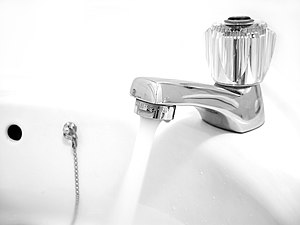
Each day more and more people are realizing the amazing benefits of Kangen Water. Dr. Dave Carpenter, N.D. the author of "Change Your Water, Change Your Life", is one of the early pioneers of using Kangen Water in his practice, after having seen the dramatic results in Japanese hospitals over 15 years ago.
He has been educating his clients on it for years. Here are a few things that he has to say about it:
- I know when people are getting well, and I can tell when something is making a difference. This water is making more difference in my patient’s health than any other water I have ever had them drink. To me the proof is in the pudding.
- A significant benefit is that the molecule cluster size of Kangen Water is smaller and scientists have proven that the absorption rate of this water is roughly five times that of regular water! As a resultKangen water improves the assimilation of the nutrients that you take. I’ve found myself needing fewer supplements since drinking this water and many others have experienced the same result.
- “I’ve owned several similar units over the past few years but I can tell you that none of them come close to working like these do no matter what the literature states. The promises and sales pitches make them sound good but they just don’t produce Kangen Water® like the Enagic machines do.
- Since the body is 70% water (at least that is ideal) I consider water to be one of the KEY components to good health. The problem is that most of my patients do not drink enough water. They say it doesn’t taste good. They drink all kinds of things that are acidic in place of it. These acidic drinks like coffee, beer, soda, fruit juice, tea, etc. detract from real health.
- Kangen Water really does taste good and I’m watching people drink more of the Kangen Water than ever before. Honestly, this is about like discovering the Fountain of Youth in my opinion!
- People drinking the Kangen Water are experiencing health benefits like I’ve only seen with expensive therapy programs. What really thrills me about this is that everyone in your family can experience the health benefits immediately!
Dr. Carpenter is very gracious to host a Health and Wellness call each week that is free on Thursday evenings. He talks about the properties of this water, how it works and answers people's specific questions. To listen in, dial 512-879-2059 and then press 388905#. The calls usually last about 30-45 minutes.
He is extremely knowledgeable about the technology. It took him years to find the machine that produced the results that he had seen in the hospitals in Japan. He knows the ins and outs of most of the units available on the market. You can learn more about his quest to find the best machine on the market. (Doctor Clinically Tests 7 Ionizers)
Dr. Carpenter holds a Bachelor of Science degree in Nutrition, is a graduate of the Royal Academy of Naturopathy in Australia as a Naturopathic Doctor, a graduate of Central States college of Health Sciences as a Naturopathic Medical Doctor, a graduate of the International Academy of Medical Acupuncturists. He is a member of the Idaho and American Naturopathic Physicians Association, the Idaho Acupuncture association and the international Association of Medical Acupuncturists. He is faculty of the Intermountain Institute of Natural Health and has been a practicing Naturopathic doctor and Acupuncturist for more than 20 years.



![Reblog this post [with Zemanta]](http://img.zemanta.com/reblog_e.png?x-id=b67cffb7-b455-4f4e-ac55-1a7dfdeedabd)

![Reblog this post [with Zemanta]](http://img.zemanta.com/reblog_e.png?x-id=00ef8ef5-8347-4aef-8d22-2fcbbbc69540)

![Reblog this post [with Zemanta]](http://img.zemanta.com/reblog_e.png?x-id=ec2908e7-f580-4f24-a6a6-b674b30a78ec)

![Reblog this post [with Zemanta]](http://img.zemanta.com/reblog_e.png?x-id=a3f2af89-468e-4965-8094-2107516b2fc4)
